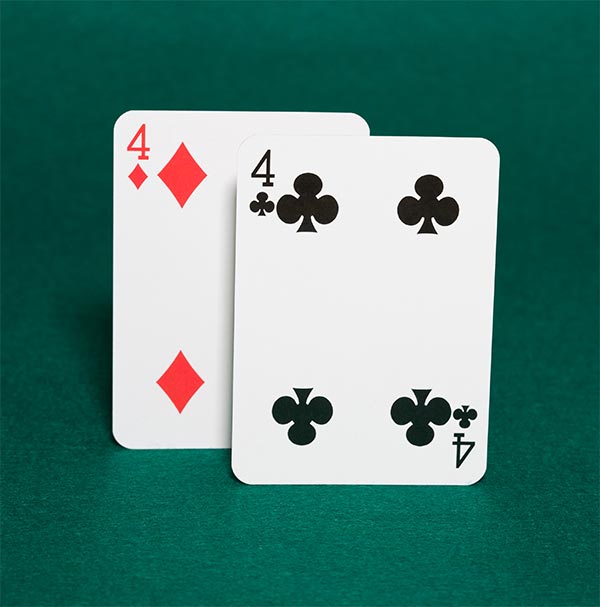Mostly, no. You should ONLY split 4s against a 4 shown by the dealer as the up-card IF (a) You’re playing single-deck blackjack and (b) you can double after pair splitting (DAS). If the DAS rule is not in play, and/or you’re playing multi-deck blackjack, you should hit.
Probability of Winning with Split 4s vs. a Dealer’s 4:
- Chances of winning by hitting your 8: Approximately 38%
- Chances of busting by hitting your 8: Less than 25%
Do you split 4s against a dealer 4 for single-deck blackjack?
If you can double after you split a pair – meaning you are playing a blackjack game with the DAS rule – you should split a pair of fours if the dealer is showing a 4, 5, or 6. If you get an Ace or 5 through 7 after splitting, you are in a good position to double down because the dealer is likely to score lower or bust out.
However, if you are not allowed to double down after splitting your pair, you should not split your 4s. You should hit, unless the dealer is showing a 5 or a 6, in which case you should hit and double-down.
Playing 4s versus Dealer 4 in Multi-Deck Blackjack.
If the DAS option is available for a pair of FOURs with multi-deck blackjack, split two 4s against a dealer’s 5 or 6 up. If not, hit.
Do you split 9s against the dealer’s up card of 5?
Yes. It would be best to split 9s against the dealer’s up-card of 5. The basic blackjack strategy dictates that you should split a pair of 9s if the dealer’s up-card is any numbered card except a 7. That is because the dealer is highly likely to have a ten-card as the down card, creating a hand of 17, so your nine-pair will win.
Even if the dealer doesn’t hold a ten-card, they have a significant likelihood of holding a hand with a 5 through 9 (aka a stiff hand). This hand has a high chance of busting. Splitting your pair of 9s versus the dealer’s 5 is a good move.
Other Points of Interest
Do you split 7s against a 5?
If you have been dealt a pair of 7s, you should split them against a 5, just as you would split aces. Your probability of creating a winning hand each from the split 7s is higher than facing the dealer’s upcard of 5.

